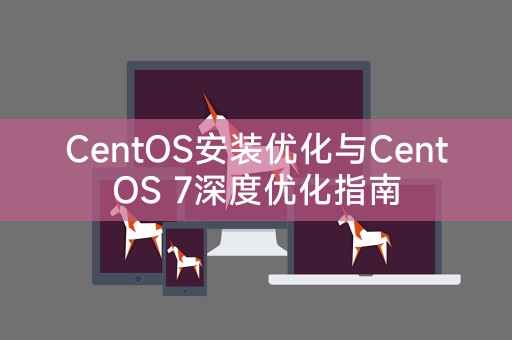Home >System Tutorial >LINUX >CentOS installation optimization and CentOS 7 in-depth optimization guide
CentOS installation optimization and CentOS 7 in-depth optimization guide
- WBOYWBOYWBOYWBOYWBOYWBOYWBOYWBOYWBOYWBOYWBOYWBOYWBforward
- 2024-02-12 14:40:251057browse
When installing and optimizing CentOS, we need to consider many aspects, including system stability, security, performance and ease of use. This article will provide detailed steps and suggestions to help you fully optimize your CentOS system.

Optimization during installation
1. Choose minimal installation: When installing CentOS, choosing minimal installation can reduce unnecessary software packages and services, thereby reducing system complexity and potential security risks.
2. Reasonable partitioning: Reasonable partitioning based on actual needs and the importance of data can improve the efficiency and security of data management.
3. Configure the network: During the installation process, configure the network connection so that you can normally access the Internet or LAN after the system installation is completed.
In-depth optimization of CentOS 7
1. Update the system: After the installation is completed, update the system software packages and security patches in a timely manner to ensure the stability and security of the system.
2. Shut down unnecessary services: Use the systemctl command to shut down unnecessary system services to reduce resource usage and potential security risks.
3. Optimize startup items: Use the systemctl command to manage startup items, retain only necessary services, and speed up system startup.
4. Configure firewall: Use firewalld or iptables to configure firewall rules to protect system security.
5. Optimize performance: Improve system performance by modifying kernel parameters and using software with better performance.
Share a little Linux knowledge
In the Linux system, there is a command called top, which can check the system's processes and resource usage in real time. Through the top command, we can know which processes are running, as well as their consumption of resources such as CPU and memory, which is very helpful for system performance monitoring and troubleshooting.
When using the top command, you can perform different operations by pressing different keys, for example:
* Press the "q" key to exit the top command;
* Press Press the "k" key to terminate a process;
* Press the "r" key to modify the priority of a process.
These tips can help you better use and manage your Linux system.
By installing and optimizing CentOS, as well as learning and mastering some Linux knowledge, we can make the system more stable, secure, efficient and easy to use. I hope the content of this article can be helpful to you, if you If you have any questions or suggestions, please leave them in the comment area.
The above is the detailed content of CentOS installation optimization and CentOS 7 in-depth optimization guide. For more information, please follow other related articles on the PHP Chinese website!

